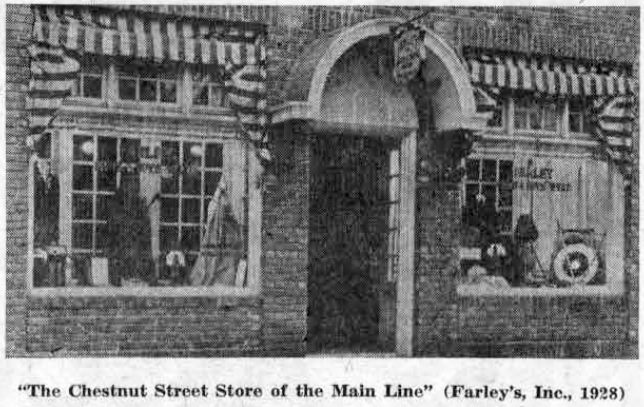
In writing of the Wayne Estate houses from time to time, your columnist has often quoted from the booklets which advertised the building and the sale of these houses. The descriptions were flowery ones indeed, but they were unequalled, if not outdone, some 50 years later when J. Howard Goodwin, in 1928, brought out his “Main Line Beautiful,” the real estate magazine about which we wrote last week.
In this magazine the Main Line is described as the spot “Where Nature Smiles,” a slogan which the magazine apparently adopted. It was also described as “The Residential Gateway to Philadelphia” which has no equal on the American Continent. The undulating country from West Philadelphia to Paoli is rich in natural scenery, which has from time to time been enhanced by the magic touch of the landscape gardener, whose artistry has made either side of the railroad a kaleidoscopic picture, not only pleasing to the eye, but winning the visitor, and he immediately becomes a booster.”
A few pages farther on in the magazine, the Wayne Chamber of Commerce, not to be outdone in descriptive powers, runs a full page advertisement which proclaims that “There is no place like Home, if your Home is in Wayne,” a very neat and compact little slogan indeed! “It was, and still is, Philadelphia’s first suburb” is the introduction to a statement in regard to the founding of Wayne by George W. Childs and Anthony J. Drexel. Among its attractions in 1928 were “clean modern stores, providing the finest parking space on the Main Line; a masterpiece of moving picture theatres, golf courses, community activities to the liking of men, women and children, colleges close at hand, churches of all denominations, drives such as can be found only in the beautiful Chester Valley and historic Valley Forge, finest of fire and police protection, pure sparkling Springfield water, an excellent community newspaper, and best of all genuine community spirit and hearty welcome to all newcomers.”
Officers of the Wayne Chamber of Commerce, which authorized the advertisement, were Charles D. Lyman, president; Charles R. Meyers, vice president, and C. Walton Hale, secretary-treasurer. All are still well-known citizens and businessmen of this area.
Among the local real estate firms which advertised in the 1929 ”Main Line Beautiful” magazine was that of Joseph M. Fronefield, father of J.M. Fronefield, 3d, located in the office building which was erected in 1927 on West Lancaster avenue. The firm specialized in the sale of “Country Homes and Farms.” George M. Aman, Sons, a firm consisting of Ralph L. Aman and George M. Aman, Jr., had two offices, one at 1218 Chestnut street in Philadelphia, and the other at 114 Audubon avenue, Wayne. Their specialties were “Insurance and Mortgages, Building and Loan Association.” Fred H. Treat, who listed “Main Line Homes and Farms,” was also the general rental and sales agent for the Windermere Court Apartments, which had been completed at that time.
C. N. Agnew, on the Lincoln Highway, advertised “Homes Built to Order and Financed” and “Suburban Homes, Farms” for sale. Hallowell and Johnson, 108 North Wayne avenue, were “specialists in Main Line Homes and Properties, Insurance and Mortgages.” C. Walton Hale, 104 North Wayne avenue, specialized in “the building, selling and rentlng of Main Line Homes of a selling value under $10,000 – providing comfortable living quarters for the average family at a monthly cost of $50 or less.”
J. Howard Mecke, Jr., with offices in the Packard Building, Philadelphia, was advertising “Something Unusual at Wayne” with the explanation that “In the Martin’s Dam Section, just five minutes by motor north of Wayne Station on the Main Line, a Colonial Village has been started.” Houses were to occupy sites varying from 1½ to five acres, having five and six bedrooms and three baths, and selling from $25,000 to $45,000. Among the unusual features of these houses were “old cranes in each fireplace (not reproductions); old wood carved mantels – some 100 years old (not reproductions) and individual built-in telephone booths (not coat closets).” At the time this advertisement was published 37 plots had already been sold.
Two real estate dealers who operated close to Wayne were A.H. Crockett, of King of Prussia, “the Gateway to Valley Forge,” and G.B.Wheeler, of Devon, who advertised houses “not just built to sell, but built to live in for generations… Anticipating Tomorrow, but realizing Today.” Unfortunately the “Tomorrow” was not the one to be anticipated with pleasure, for that “tomorrow” brought the depression of the early 1930’s.
(To be continued)
